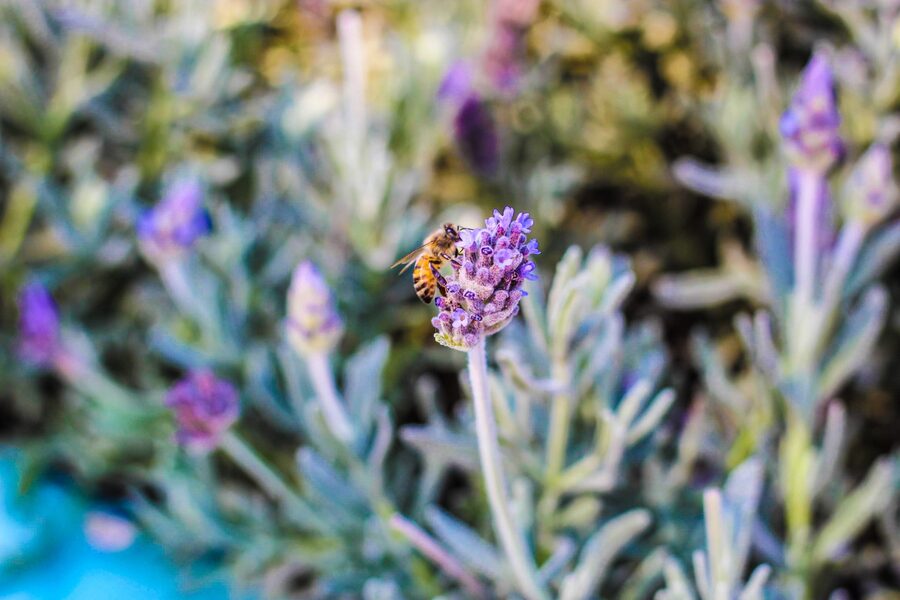Lachlann Sanson
Bringing pollinators to your gardens can not only benefit you and your space, but the environment as a whole.
By bringing pollinators to your garden you boost fruit and vegetable production as well as aiding in managing pests.
Pollinators sustain the environments outside our gardens by promoting biodiversity and by allowing the flowering plants around us to reproduce.
With such large benefits, it’s a no brainer to do your best to invite pollinators to your green space.

The easiest way to bring pollinators to your garden is to plant flowers, inviting them in with the promise of pollen.
There are many factors that impact which flowers work best to bring in the bees. One of the most obvious factors is how long the plant flowers for; sowing seeds for a flower that blooms only once is not going to have the impact on your garden that a lavender or daisy that will flower for a full season will have.
Keep this in mind when evaluating your flower choice, even if the longer blooming options don’t have the same visual impact of a queen of the night.
Another factor that impacts a flowers potential to attract pollinators is colour. This may seem weird as surely pollen is pollen and the birds and bees should be happy with any flower? However, colour is very important.
If you’re looking to attract birds to pollinate then take a cue from Australia itself. Many native plants have bright red flowers to attract the native bird life.
A common example of this is the bottlebrush. If red isn’t appealing to you then your best bet may be bees. Bees lack the ability to see red and therefore, flowers in blue and white seem to be their preference.
This is not a complete rule, as some flowers have paths invisible to the human eye that invite pollinators in, and pollinators will choose flowers outside of their preference if that is what is available. Colour should still be kept in mind despite this.
Perhaps the most important factor to consider is of course your garden. Plans of long blooming blue flowers might be struck down by the soil and climate of your garden. The other factors are not important if the flowers you choose won’t flourish in the space you have for them, therefore, it is important to plant what will grow and bloom in an Australian climate, and with the resources you have in your garden.
Native plants are your best bet at this and have the added benefit of potentially bringing in native Australian bees, which are stingless.
If planting flowers doesn’t work for you, whether you don’t appreciate them or simply don’t have the space in your vegetable garden, there are non-traditional options available for you. T
he easiest option for this is actually leave some of your vegetables in the ground. Flowering vegetables such as broccoli and carrots can attract pollinators if you leave behind a portion of your harvest to develop their flowers. The umbels of carrots in particular are full of nectar to attract bees.
Another avenue to attract pollinators is planting herbs. Lavender, rosemary, oregano, borage, basil, yarrow, dill, parsley; all of these herbs produce flowers to attract pollinators while also having use in your kitchen year-round. Maybe plant chamomile and enjoy a calming tea made from its leaves and flowers. Plenty of pollinators can be attracted from these plants that serve multiple uses instead of sitting and looking pretty.
There is a serious option for those that are truly keen for a garden full of pollinators. If you have the space for it, a beehive can be built in your backyard, ensuring your garden is the epicentre of pollination.
When thinking about beehives you might think of honeybees, and they are of course an option, however, honeybees do require significant maintenance for the reward that is harvestable honey. For a less hands on approach many gardeners consider a native, stingless beehive. These bees, although they don’t produce harvestable honey, require little to no maintenance, providing all the reward of pollination without any ongoing costs and effort.
With such a variety of options, it is worthwhile to consider bringing pollinators into your garden. Even if you don’t need their help in your garden, a greener world is a happier world and pollinators, both big and small, certainly make our environment healthier. If you have a garden its one small step that will have a big impact, spread the word, spread the pollen.
Chris Norris, 2017, 5 Great Reasons to Plant a Pollinator Garden. http://richmondfarmersmarketvt.org/2017/07/20/5-great-reasons-plant-pollinator-garden/
Sara Popescu Slavikova, 2017, Environmental Benefits of Pollination.
https://greentumble.com/environmental-benefits-of-pollination/
ABC Gardening Australia, 2017, Bringing in the Bees
ABC Gardening Australia, 2011, Planting for Pollinators
https://www.abc.net.au/gardening/factsheets/planting-for-pollinators/9432648
James Bullen, 2016, What flower colours do birds and bees prefer?